Single-cell transcriptome analysis reveals three sequential phases of gene expression during zebrafish sensory hair cell regeneration
- PMID: 35316618
- PMCID: PMC9188816
- DOI: 10.1016/j.devcel.2022.03.001
Single-cell transcriptome analysis reveals three sequential phases of gene expression during zebrafish sensory hair cell regeneration
Abstract
Loss of sensory hair cells (HCs) in the mammalian inner ear leads to permanent hearing and vestibular defects, whereas loss of HCs in zebrafish results in their regeneration. We used single-cell RNA sequencing (scRNA-seq) to characterize the transcriptional dynamics of HC regeneration in zebrafish at unprecedented spatiotemporal resolution. We uncovered three sequentially activated modules: first, an injury/inflammatory response and downregulation of progenitor cell maintenance genes within minutes after HC loss; second, the transient activation of regeneration-specific genes; and third, a robust re-activation of developmental gene programs, including HC specification, cell-cycle activation, ribosome biogenesis, and a metabolic switch to oxidative phosphorylation. The results are relevant not only for our understanding of HC regeneration and how we might be able to trigger it in mammals but also for regenerative processes in general. The data are searchable and publicly accessible via a web-based interface.
Keywords: hair cell death; hair cell regeneration; lateral line system; mechanosensory organ; neomycin; pseudotime analysis; scRNA-seq atlas; stem cells; support cells; zebrafish.
Copyright © 2022 Elsevier Inc. All rights reserved.
Conflict of interest statement
Declaration of interests The authors declare no competing interests.
Figures
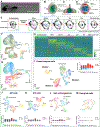
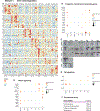
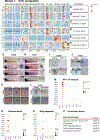
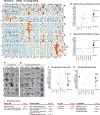
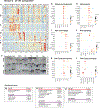
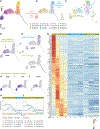
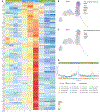
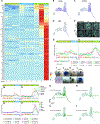

Similar articles
-
Single-cell transcriptomic atlas reveals increased regeneration in diseased human inner ear balance organs.Nat Commun. 2024 Jun 6;15(1):4833. doi: 10.1038/s41467-024-48491-y. Nat Commun. 2024. PMID: 38844821 Free PMC article.
-
foxg1a is required for hair cell development and regeneration in the zebrafish lateral line.bioRxiv [Preprint]. 2024 Apr 15:2024.04.12.589268. doi: 10.1101/2024.04.12.589268. bioRxiv. 2024. Update in: MicroPubl Biol. 2024 May 8;2024. doi: 10.17912/micropub.biology.001219. PMID: 38659824 Free PMC article. Updated. Preprint.
-
prdm1a drives a fate switch between hair cells of different mechanosensory organs.bioRxiv [Preprint]. 2025 Jun 3:2025.06.01.657251. doi: 10.1101/2025.06.01.657251. bioRxiv. 2025. Update in: Nat Commun. 2025 Aug 18;16(1):7662. doi: 10.1038/s41467-025-62942-0. PMID: 40501783 Free PMC article. Updated. Preprint.
-
Systemic antibiotics for chronic suppurative otitis media.Cochrane Database Syst Rev. 2021 Feb 4;2(2):CD013052. doi: 10.1002/14651858.CD013052.pub2. Cochrane Database Syst Rev. 2021. Update in: Cochrane Database Syst Rev. 2025 Jun 9;6:CD013052. doi: 10.1002/14651858.CD013052.pub3. PMID: 35819801 Free PMC article. Updated.
-
A rapid and systematic review of the clinical effectiveness and cost-effectiveness of paclitaxel, docetaxel, gemcitabine and vinorelbine in non-small-cell lung cancer.Health Technol Assess. 2001;5(32):1-195. doi: 10.3310/hta5320. Health Technol Assess. 2001. PMID: 12065068
Cited by
-
Stepwise fate conversion of supporting cells to sensory hair cells in the chick auditory epithelium.iScience. 2023 Jan 25;26(2):106046. doi: 10.1016/j.isci.2023.106046. eCollection 2023 Feb 17. iScience. 2023. PMID: 36818302 Free PMC article.
-
Transdifferentiation is uncoupled from progenitor pool expansion during hair cell regeneration in the zebrafish inner ear.bioRxiv [Preprint]. 2024 Apr 11:2024.04.09.588777. doi: 10.1101/2024.04.09.588777. bioRxiv. 2024. Update in: Development. 2024 Aug 1;151(15):dev202944. doi: 10.1242/dev.202944. PMID: 38645220 Free PMC article. Updated. Preprint.
-
Optimizing gRNA selection for high-penetrance F0 CRISPR screening for interrogating disease gene function.Nucleic Acids Res. 2025 Feb 27;53(5):gkaf180. doi: 10.1093/nar/gkaf180. Nucleic Acids Res. 2025. PMID: 40103232 Free PMC article.
-
Molecular specializations underlying phenotypic differences in inner ear hair cells of zebrafish and mice.Front Neurol. 2024 Oct 17;15:1437558. doi: 10.3389/fneur.2024.1437558. eCollection 2024. Front Neurol. 2024. PMID: 39484049 Free PMC article.
-
Single-cell transcriptomic profiling of the zebrafish inner ear reveals molecularly distinct hair cell and supporting cell subtypes.Elife. 2023 Jan 4;12:e82978. doi: 10.7554/eLife.82978. Elife. 2023. PMID: 36598134 Free PMC article.
References
Publication types
MeSH terms
Grants and funding
LinkOut - more resources
Full Text Sources
Molecular Biology Databases

